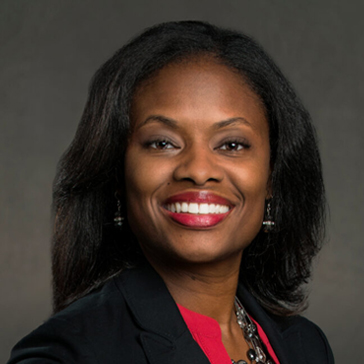It’s no secret that our education system continues to struggle with issues of race and diversity. I recently saw this firsthand when my son’s school was combined with a school a little over a mile down the street that has a much higher percentage of low-income students of color. This was part of the superintendent’s plan to address the impact of concentrated poverty by re-configuring student assignments. Discussions that took place in our community revealed that quite a few privileged parents were publicly opposed to their children going to a school that had more children from low-income families.
As I listened to these parents, it became even clearer to me that we need organizations that drive toward high-quality education for every child while supporting the students’ communities. But how do we ensure the organizations themselves are diverse, equitable and inclusive?
Education First has always worked toward the vision that all students –particularly low-income students and students of color – are prepared for success in college, career and life. But a few years after we were founded, our leadership realized that, in order to effectively pursue this vision, we needed to take a hard look at ourselves. Our staff was not diverse and we didn’t have a concrete approach to addressing our individual racial biases. How could we be effective in our work while looking so different from the communities we serve? Meanwhile, clients were actively trying to address the needs of all students, and they were looking to us for help.
I joined Education First as the organization was starting to try to address these issues. That year the leaders made a commitment to diversify the staff by recruiting, hiring and promoting more people of color across multiple levels of the organization. But it was clear that wasn’t enough. Our leaders began asking hard questions about the firm’s commitment to diversity and equity within education and realized that we hadn’t adequately addressed our organization’s ability to effectively serve all students-particularly low-income students and students of color. We started with a focus on authenticity—everyone at Education First is encouraged to bring your most authentic self to work—and also gathered a small, diverse group of staff members—including me—and asked how we were experiencing diversity, equity and inclusion within the organization and how the firm could do a better job of living up to its vision and mission.
This was a pivotal moment for me. I had never been part of an organization that asked my perspective about how it should move forward on issues of race and equity with the intent to listen and incorporate ideas. It spoke to one of the things I love about Education First’s culture: a willingness to listen to its staff and respond to their needs.
Based on staff input, we revised our strategic plan and made a focus on equity the centerpiece of the organization’s vision and mission. This marked the beginning of Education First’s RIDE (Race, Inclusion, Diversity and Equity) agenda. Our RIDE agenda is focused on addressing issues of race and equity within our firm and in support of our clients. It includes shifting mindsets in the organization so that all employees—regardless of background—are able to bring their authentic selves to work. Having worked at enough places with diversity statements but a culture that didn’t embody them, I questioned what this would look like in practice. However, through a mix of grassroots and grass-tops efforts, a few components of our RIDE agenda have begun to come to life:
We have come a long way on our journey, but we still have much more to learn and a lot of tough questions to answer. What do our leaders need to be able to effectively lead on issues related to race and equity? Given our varied comfort levels across the firm, how do we build our competence at the right pace? How can we contribute what we’re learning to the field? How do we bring our RIDE lens into our work with clients? And how do we maintain a deep, consistent, embedded focus on issues of race, inclusion, diversity and equity?
I’ve often wondered whether it is possible for an education organization to be truly anti-racist and multicultural. On my most cynical days, I’m not so sure. I watch policies intended to support underserved children being undone. I watch people discuss education issues in the context of socioeconomics, when data indicate race-related gaps continue to persist even within similar socioeconomic groups. It seems to me that often our discomfort with addressing the role race plays in what we’re providing students outweigh the need to create conditions for every child to enjoy a high-quality education. This can be frustrating and disheartening.
But I choose to remain hopeful. The needs of our children are urgent and require immediate attention; I don’t have the luxury of dwelling on my frustrations. Instead I choose to stay focused on how I can help address these issues. I feel grateful to work in an organization that aspires to see racial and cultural differences as critical assets in our efforts to truly transform our educational system. Because of our efforts, I believe the impact on the students and families we serve and the organizations we support will be tremendous.
Wrestling with issues of race and diversity isn’t easy. But I believe if organizations can be transparent about their journey, we can support each other in our collective efforts to prepare all students for success in college, careers and life.

